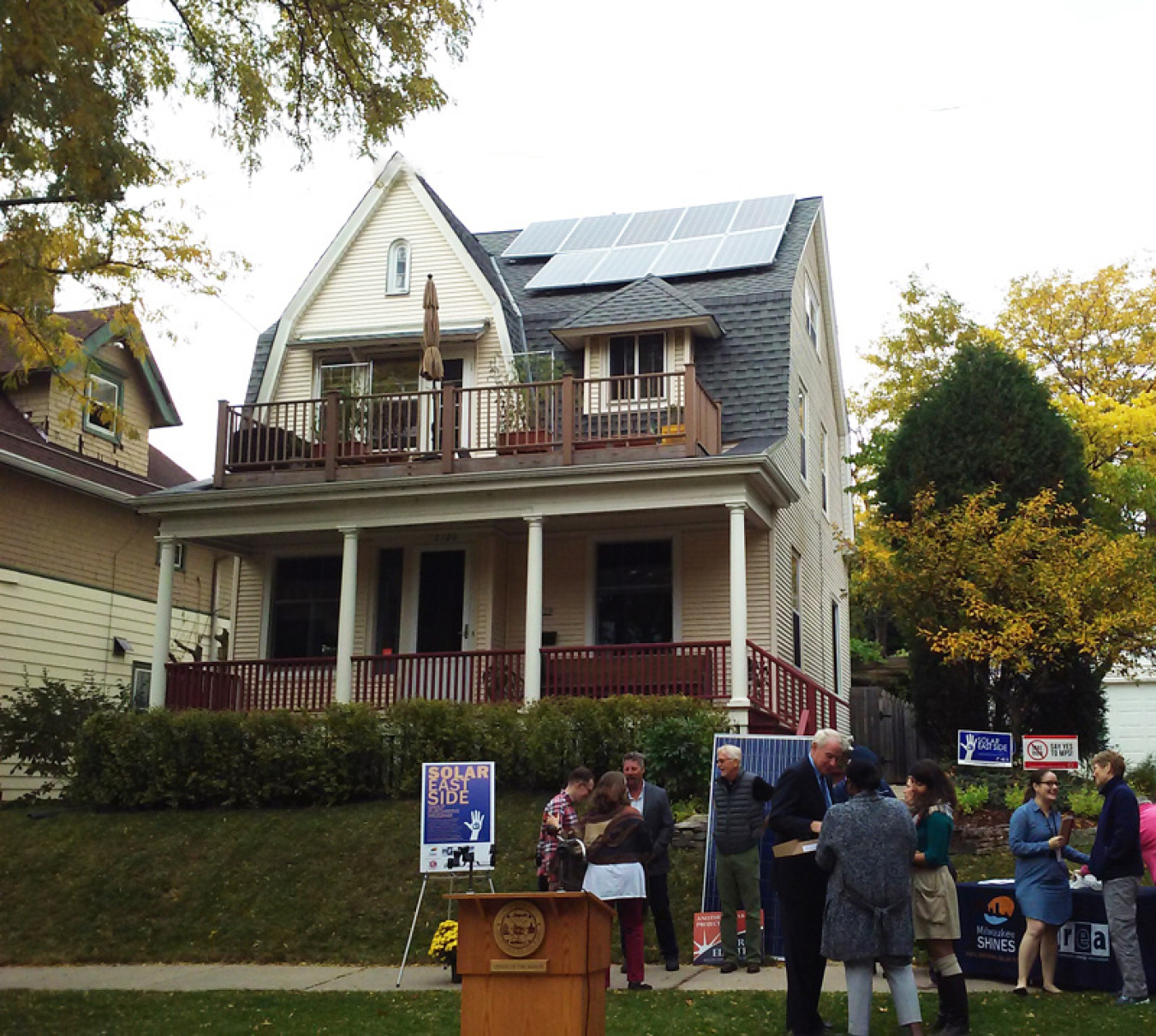It may come as no surprise to our readers that California has installed more solar energy than any other state. Its solar-friendly market has allowed for rapid installation, adding as much solar to the grid in 2014 as the entire United States did betwe...
Office of Critical Minerals and Energy Innovation
December 29, 2015
As a part of their Rooftop Solar Challenge II award, the Midwest Renewable Energy Association has organized group solar buys for 92 families in Milwaukee, Wisconsin.
It may come as no surprise to our readers that California has installed more solar energy than any other state. Its solar-friendly market has allowed for rapid installation, adding as much solar to the grid in 2014 as the entire United States did between 1970 and 2011. While there are still 13 states with less than five megawatts (MW) of solar installed, the solar boom will soon reach the entire United States.
The SunShot Initiative is working with communities across the nation to jumpstart local solar markets by supporting projects that dramatically reduce the cost of solar and make it easier and faster to install. One way of doing this is through “Solarize" campaigns, which are locally organized community outreach efforts aimed at getting a critical mass of area homes and businesses together to “go solar” in an established period of time (usually a few months). Solarize campaigns leverage group-purchasing power so that customers can purchase solar systems in bulk for significantly less money than the typical market rate by creating a steady stream of purchases and installations. This is good for consumers, good for local installers and the jobs they create, and can even help local jurisdictions streamline their processes by establishing a pipeline of installations with similar characteristics. Solarize campaigns can quickly deploy a large amount of solar, help establish uniform processes, and build trust among communities, reassuring members through peer support that solar is a smart path forward.
The first Solarize campaign was launched in 2009 with the help of the Energy Department, and now with additional research and technical assistance from various SunShot Soft Costs reduction projects, more than 230 Solarize campaigns in 25 states and the District of Columbia have popped up across the country.
Recognizing that the decision to go solar stems from a variety of factors, SunShot funded the Solar Energy Evolution and Diffusion Studies (SEEDS) program in 2013. SEEDS analyzed the behaviors and motivations behind the decision to adopt solar. A team of researchers from Yale, Connecticut Green Bank, and Duke University sought to quantify the effectiveness of Solarize programs throughout Connecticut. The findings are impressive: Solarize campaigns more than doubled the number of solar installations in each participating region, with local events and solar ambassadors being the most influential forces in shaping a person’s decision to go solar. Of all the homeowners who installed solar, 20% were not previously interested in it. Installed system prices from Connecticut Solarize campaigns were on average 16% lower than the market rate.
SunShot has continued to support Solarize campaigns through technical assistance programs started by the Solar Outreach Partnership and competitions like the Rooftop Solar Challenge. The Metropolitan Washington Council of Governments (MWCOG), a member of a Rooftop Solar Challenge team Solar Ready II, is working with nonprofit Community Power Network (CPN) to educate citizens and deploy solar across Maryland, Virginia, and Washington, DC. In 2014 alone, CPN engaged 3,000 citizens through Solarize campaigns, facilitating 541 solar installations that resulted in 3.2 MW of new solar capacity – or 4% of all new installations – added to the region. Working alongside MWCOG and the Solar Ready II team, CPN is unlocking solar deployment in the national capital region.
Citizen education and engagement are at the heart of Solarize campaigns and have contributed to each of these local successes. Developing, understanding and supporting programs like these are great examples of how SunShot is tapping into the power of communities to break down financial and regulatory barriers to going solar while helping more Americans realize the possibility of a renewable energy future.

